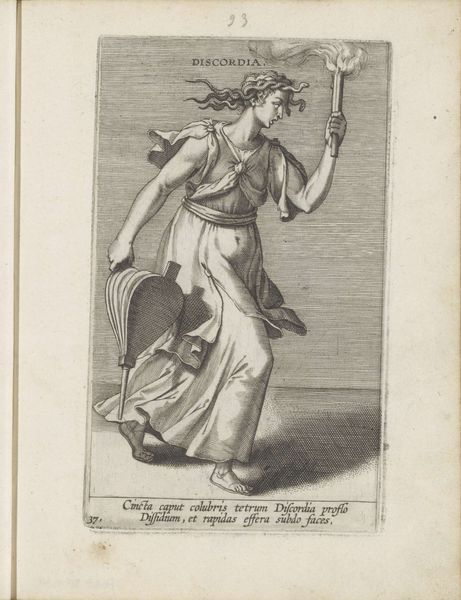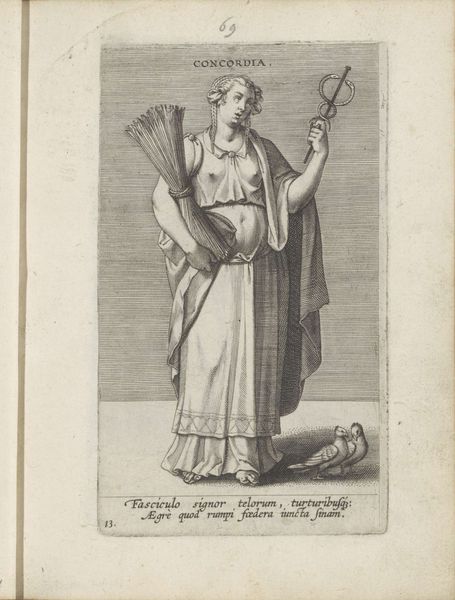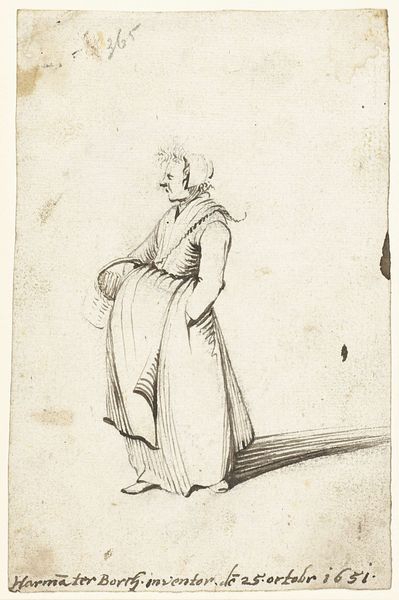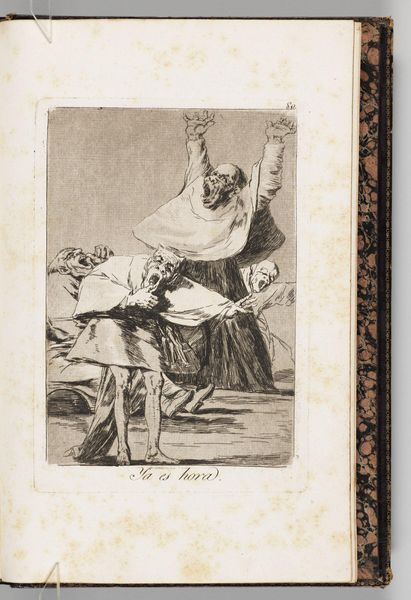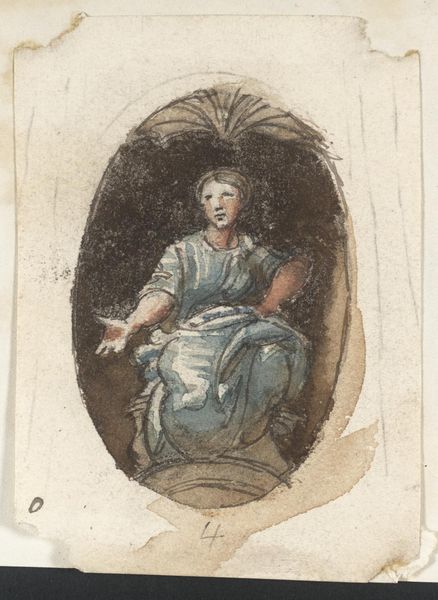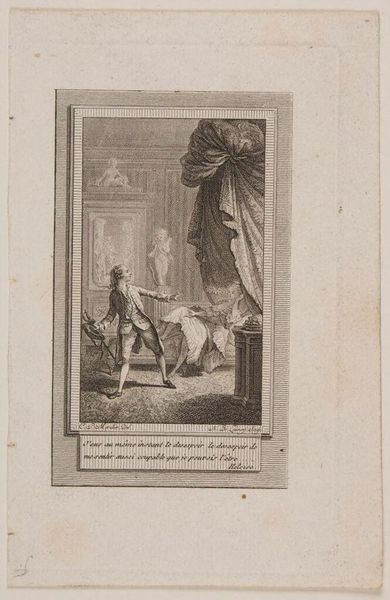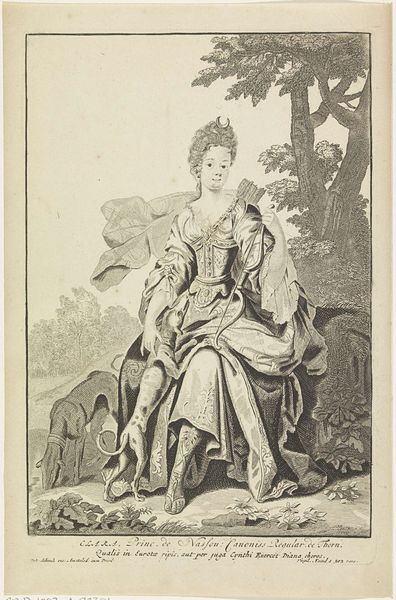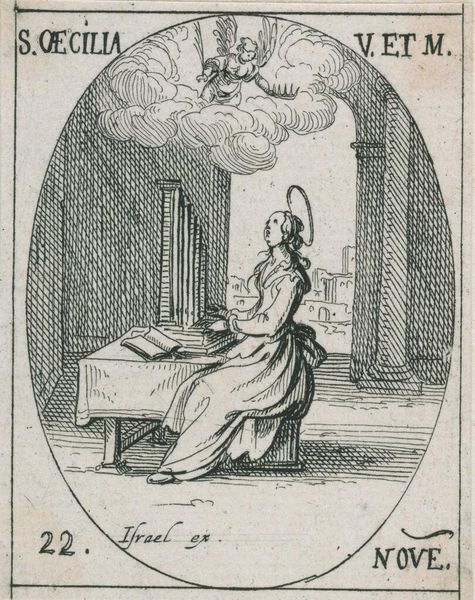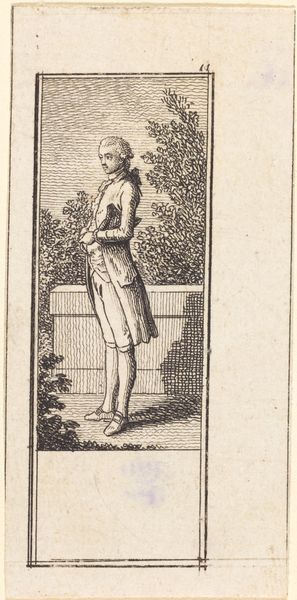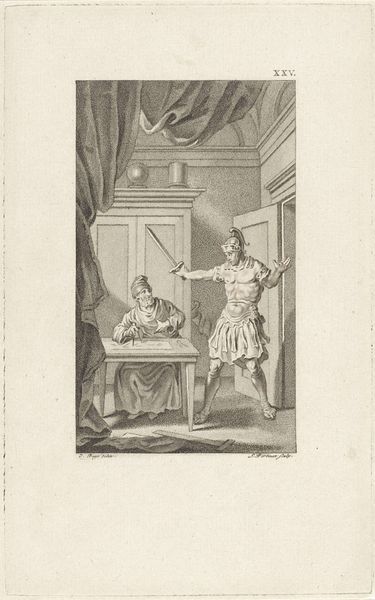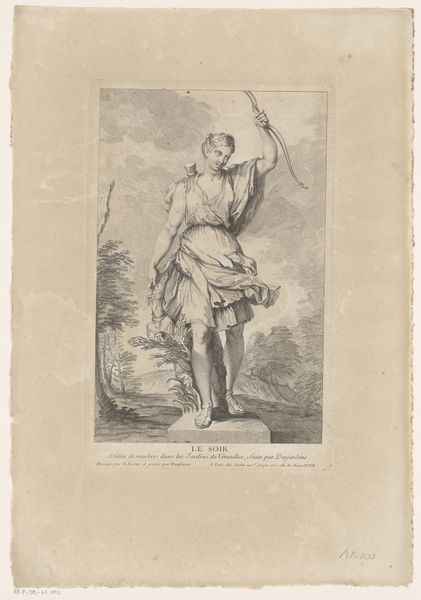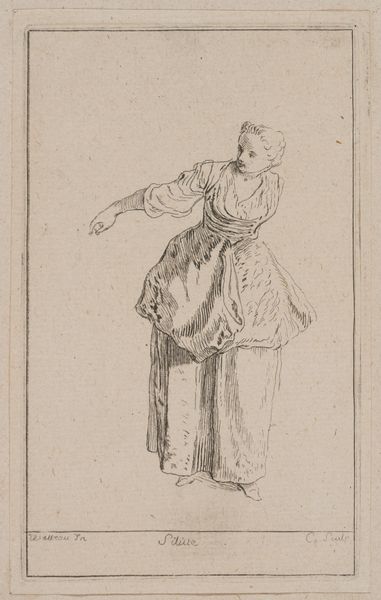
Modes et Manières du Jour, 1800-1801, latere druk van No: 4: Chaise vacant (...) 1800 - 1804
0:00
0:00
print, engraving
#
portrait
# print
#
figuration
#
romanticism
#
cityscape
#
genre-painting
#
engraving
Dimensions: height 175 mm, width 109 mm
Copyright: Rijks Museum: Open Domain
Editor: This is "Modes et Manières du Jour, 1800-1801, latere druk van No: 4: Chaise vacant (...)" by Louis Philibert Debucourt. It’s an engraving, a print of a fashionable woman. I find it interesting how relaxed and nonchalant she looks, seated so casually, yet also elegant, but then there's a random gentleman standing way off in the back, almost like he doesn't belong. What do you make of this scene? Curator: That "Chaise Vacante," or "Vacant Chair" is suggestive, isn't it? A chair left empty always whispers a story. Here, within the evolving fashion of the Directoire period, it might hint at absence, waiting, or even a power dynamic. She’s positioned quite high, seemingly at the height of her fashionability, so could her posture symbolize independence, or even indifference? Editor: Interesting. So the vacant chair might not just be a random detail but loaded with meaning about social relationships? Curator: Precisely. Note the gaze; is it inviting, dismissive, melancholic? How does her bonnet and shawl, as indicated in the title, further inform the intended mood, and more broadly, do they provide commentary on class, gender, and even the lingering echoes of revolution? Even the incidental gentleman contributes, through costume, pose, gesture and position in relation to the foreground figure, to our experience and potential interpretations. What thoughts do they trigger for you? Editor: The fact that she's facing forward looking directly out while he’s got his back half-turned and is looking in on her… It makes her a confident main focus, while he looks less involved, but maybe observing. Curator: The intentionality of dress combined with elements within domestic or societal space speak to the spirit of the age; memory, power and expectation collide within the most 'minor' objects such as dress and furniture! What do you think that overall effect speaks to in terms of cultural values at that moment in time? Editor: This helps to look at the painting not just for what it is, but for what it represents culturally! I wouldn't have considered the symbolic weight of something like a vacant chair so carefully.
Comments
No comments
Be the first to comment and join the conversation on the ultimate creative platform.

